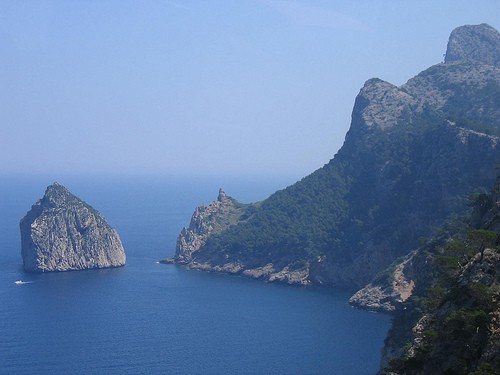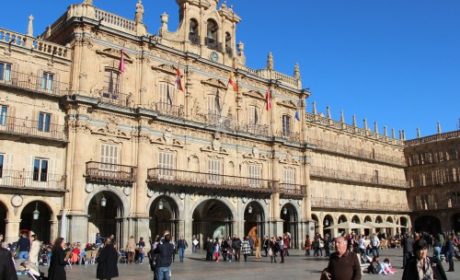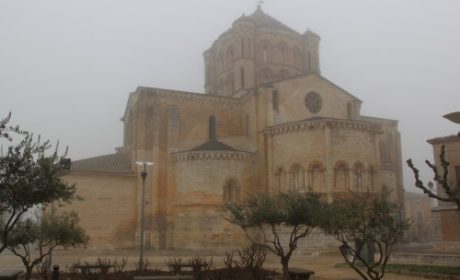Like most of the country, Spain‘s Andalusia region is simply spectacular. Along with the stereotypical (but fairly accurate) reputation for wonderful tapas and vibrant lifestyle, this Spanish region has a very distinct culture. Today’s guest contributor, Naomi Elster, is showing us how to explore Cordoba, whose charm and history make it one of Spain’s most idyllic cities.
Mezquita: Mosque Meets Cathedral
Spain’s southernmost region, Andalucía, is a fascinating juxtaposition of European Catholic and Moroccan Muslim history, of monuments left from ancient worlds and a vibrant modern pace, and in the year I lived and traveled this region, nowhere captured this juxtaposition more perfectly for me than the Mezquita in Cordoba.

The first time I visited this monument, whose chosen God of worship jumped between the Catholic God and the Muslim Allah for centuries depending on who was in power at the time, I had never seen anywhere like it. Everything was so exotic it might have come from another planet – and then I took three small steps and found myself in the middle of a Catholic Cathedral exactly like the ones I’d grown up around in Ireland.

From the outside, it’s the size, more than anything, which impresses itself on the imagination. Many of the old town’s romantic narrow streets twist and turn their sinuous way to open out into a large square, completely dominated by the thick stone walls of the Mezquita, raised over the street on a platform of stone polished smooth by worshippers of both religion and architecture.

Especially at night, the sight would be foreboding, if not for the lively chatter that goes on around this monument, many of the locals gathering on balmy evenings to rest their elbows and wine glasses on the plinth, and spirited children dodging postcard-writing tourists as they race up and down the stone steps.

From the busy street, you first step into an open courtyard, the Patio de los Naranjos, a cobbled garden once used for the ritual of washing before prayer, and now home to ordered rows of orange trees and the musical birds that nest in them. Each tree sits in a circular depression in the cobbled ground, with thin brick-lined channels running between the trees, joining the dots to make sure the water collected in a central cistern supplies each of the trees with enough water. In a way it’s sometimes the simple sophistication of this ancient irrigation system that impresses me the most.
The shade of the interior is a welcome relief from Cordoba’s intense midday heat, and the sheer space inside the cathedral imbues the place with a sense of stillness and serenity, despite the many tourists within. One of the most spectacular features inside is the richly gilded Mihrab archway, with an ornate dome in the fashion of an eight-pointed star above it, and the many intricately scalloped archways throughout the former mosque, and the small, recessed Christian chapels along the walls. But the Mezquita’s most spectacular and memorable feature is the network of red-and-tan striped double arches, which, along with almost a thousand pillars created from Ancient Roman ruins, support the roof, stretching on and on and on as far as the appreciative eye can take in.
Jewish Quarter, Arabic Baths
The atmospheric Juderia, or old Jewish quarter, is a real treat, full of artisan shops and whitewashed buildings, home to one of Spain’s only surviving synagogues and the Casa Sefarad, a museum of Spanish Jews.

But the highlight of my visit to the Juderia had less to do with scripture and more to do with spa. The well-advertised Hamam Al-Andalus offers discounted spa and Mezquita combined tickets, and a loyalty scheme between different cities may make this company a more attractive option for some visitors.
However, on the recommendation of local friends, I visited the less well-known and cheaper Baños Arabes de Cordoba, and left both relaxed and enchanted. Smaller and simpler than other spas I’ve visited, these Arabic baths have a uniqueness and an intimacy to them I’ve often found missing in more upmarket places. You step from the changing rooms into a light filled courtyard, centered on a narrow, bright rectangular pool. Although the water barely comes up to your knees, it’s so salty that it’s easier to float lightly atop the water than to sink down into it. At any point during your visit you can return to this courtyard to lounge in one of the chairs, and the staff will serve you with complimentary, delicious Moroccan mint tea. Inside there are warm, cold and hot pools, and a steam room. The hottest pool is under a low, curved roof, with old star shapes carved into the bricks and candles flickering in recesses in the walls. It’s impossible, even as an adult, not to believe in magic.
Museums, Gardens, and Game of Thrones
The well-laid out archaeology museum is free for EU citizens (but won’t break the bank for others, at €1.50), and the museum not only houses items of local history within its walls; the walls themselves are history.

The original museum displayed artifacts and information tracing local history all the way from 300,000 BC in the rooms and courtyards of a Renaissance palace. In 2001, work began on a modern extension to the museum, but builders got more than they bargained for when they dug for the foundations, and dug up an Ancient Roman Theatre in the process. The ruins were respectfully incorporated in to the museum, and visitors can drop down to the basement to walk amongst this very authentic exhibit.

Day or night, one of the most evocative sights in Cordoba is the Roman Bridge, first built in the 1st century, which still stretches its way across the wide Guadalquivir river. This bridge was used in Game of Thrones, even though it was subsequently enhanced by CGI to make it seem larger. A riverside path leading up to the bridge offers the best views, but be careful not to bump into any of the newlywed couples who love to use it as a backdrop for their photos, especially at dusk.

Looking for hotels in Cordoba? We can help!
If visiting on a weekend, the impressive botanical gardens are ideal for a relaxed Sunday stroll, especially as admission is cheaper on Sundays, when a quirky flower and art market takes place near the entrance. The botanical gardens are conveniently located next to the city zoo.

Travel Tips and Information
When to go Cordoba is stunning year round, but for the uninitiated, an Andalusian summer really drives home why people talk about “the fires of hell.” If you hail from a cooler climate, July and August – even June – might be too draining for you to feel able to do very much. May is a good but not necessarily cheap time to visit, with the Cruz de Mayo festival kicking off a month of ‘patio contests,’ where the locals open the doors to their homes to show off their amazing patios, decorated with flowers and mosaics. My personal favourite time to visit is October, when days are still hot but nights cool enough to sleep easily, and accommodation much better value than spring and summer months.
How long to stay Cordoba is small and walkable, making a 2-3 day stay ideal. It’s also very well connected with the rest of Andalucía, with the bus and train stations just a short walk from the center, making it a perfect road trip stopover.
Food Be careful in Spain not to confuse “menu” and “carta.” A “carta” is a menu as we know it, whereas “menu” is a set menu. Many Spanish people have their main meal in the middle of the day rather than the evening, so you can sometimes find more eating options available around lunchtime. The menu del día, typically around €12, offers a starter, main course, dessert, bread and a drink, and is a great way to sample authentic local cuisine. If you are in Cordoba in the run up to Semana Santa (holy week, the week before Easter) be sure to sample the seasonal torriha, a sweet dish made from bread, honey, and sugar.
Opening Hours and Prices (as of 2 September 2017)
The Mezquita is open from 10.00 – 19.00 daily, with tickets to the Cathedral from €10. Entrance to the Patio is free. Night visits also available. Although the staff are somewhat more reasonable about enforcing dress codes (ahem, Italy!), so shorts/vests in my experience haven’t been a problem, it is a place of worship, so don’t rock up in your beach gear.
The archaeology museum is open 09.00 – 20.30 Tues – Sat, 09.00 – 15.00 Sun, closed Mon.
Botanical Gardens opening hours vary with the season and can be checked here. €1 on Sundays, €3 otherwise. The zoo opening hours similarly vary (check here), entry €4.50.
The Baños Arabes de Cordoba is open from 10.00 – 24.00 and has packages from €19 – €67. Accommodation also available.
Cordoba looks like a great place to visit, doesn’t it? What’s your favorite Spanish destination? Come join the conversation at the My Itchy Travel Feet page on Facebook. Or send us an email with your thoughts.



